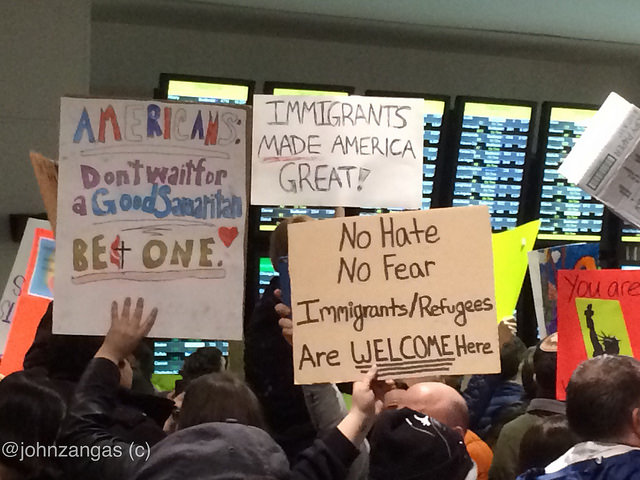New York, NY- Like the waves of a tsunami tens of thousands surged through Manhattan on Saturday to decry police violence and the killings of unarmed Blacks. The Millions March reflected growing public anger towards a broken justice system tilting towards police impunity for misconduct.

The Millions March was “unlike anything I’ve seen since the civil rights movement,” said Tippy Brooks, an activist who has been involved in social justice issues for 50 years.
Marchers chanted “Black Lives Matter,” I can’t Breathe,” and “No Justice, No Peace,” popular catch-phrases of the growing movement.
The permitted part of the march began in Washington Square Park and finished at the Police Headquarters. But then the energy of thousands carried it forward past the designated route-unabated-pushing past New York City Police barricades, closing downtown thoroughfares and temporarily shutting down the Brooklyn Bridge. Though one arrest, there was little police could do to stop it. Thousands crossed Brooklyn Bridge, pushing deep into Brooklyn, and ending 10 hours after the demonstration started.
“I was afraid to go past police but the young weren’t afraid so I went across with them,” said Eunice, a 50 year old grandmother from the Bronx, who didn’t give her last name and was at her first protest.”

For the protesters who left Foley Square and continued blocking streets downtown, there was a sense of new felt power, as anger mixed with exhilaration when police were unable to stop them. At one point they covered a police car with protest signs in defiance.
In the week before the Millions March, momentum had been building with nightly die-ins at Grand Central Station, shut downs of Macy’s and Forever 21 retail stores, and protests at Union And Times Squares which had become a popular theme of resistance.
A New York grand jury decision not to indict NY Police Officer Daniel Pantaleo in the choke-hold killing of Eric Garner, an unarmed Black man last week, came days after another prominent grand jury decision in St Louis, not to indict Ferguson police officer Darren Wilson in the killing of Mike Brown, another unarmed Black youth. Both cases helped galvanize nationwide response to police misconduct.
In the past year nearly a dozen questionable police killings have put a spotlight on the grand jury review of police walking away without trials.
Millions March protests also took place in major cities such as Austin, Baltimore, Berkley, Boston, Chicago, Minneapolis, Oakland, and Washington, DC, locations of other prominent police killings.
Across the country the demand to bring police to justice for homicides against unarmed Blacks is growing with a strong grassroots response to it. Police department chiefs are beginning to face rising public scrutiny when police kill the unarmed and escape justice.
“It is empowering to see this happening again,” said Brooks. “Maybe we’ll see change.”
[fshow photosetid=72157649740224682]





